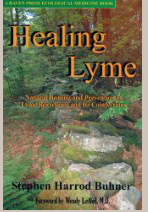Banderol and samento study

Dr. Eva Sapi at the University of New Haven Department of Biology and Environmental Sciences has done a study with samento and banderol. Do you have any comments on using banderol for treating chronic lyme? Cumanda? Thanks in advance.
The study you mention is ONLY an in vitro study. I discuss the nature of in vitro work on lyme spirochetes in my book, they are virtually useless. Literally thousands of compounds can kill the spirochetes in vitro. The problem is that test tube spirochetes are NOT the same as the ones expressed into the body through a tick bite. There are a number of research papers that go into this in depth. This early misunderstanding is part of what led to the trouble in treating lyme. I do think cat’s claw is highly useful in treating lyme. As to banderol, the extract made from the bark of the otaba tree, there is virtually NOTHING on that plant in the literature. It most likely does have antibacterial action, most South American species of plants do, but there is just too little on it to make any definitive statements about it. As to Richard Horowitz’s protocol: I have spoken with him and looked over his treatment plans and he uses a very wide variety of things to treat lyme, NOT just these two herbs. Banderol probably does have some efficacy in practice but I can’t in any way say that it is a specific for lyme. I am very uncomfortable with the lack of data on the plant, even in ethnobotanical sources.
![]() posted on November 19, 2011 in cowden herbs, Herbs, miscellaneous
posted on November 19, 2011 in cowden herbs, Herbs, miscellaneous
527 views
Trackback URL: http://buhnerhealinglyme.com/herbs/banderol-and-samento-study/trackback/
Leave a reply
Please do not use this comment section to submit a question to the Buhner Healing Lyme column. Please click here to submit your question. The comments section is reserved for dialogue related to the topics covered in the Q & A posted above. Thank you!











